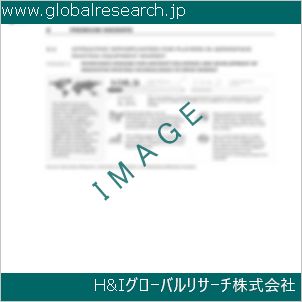1 Light Aggregate Market Overview
1.1 Product Definition
1.2 Light Aggregate Segment by Type
1.2.1 Global Light Aggregate Market Value Growth Rate Analysis by Type 2022 VS 2029
1.2.2 Natural Lightweight Aggregate
1.2.3 Artificial Lightweight Aggregate
1.3 Light Aggregate Segment by Application
1.3.1 Global Light Aggregate Market Value Growth Rate Analysis by Application: 2022 VS 2029
1.3.2 Chemical Industry
1.3.3 Architecture
1.3.4 Other
1.4 Global Market Growth Prospects
1.4.1 Global Light Aggregate Production Value Estimates and Forecasts (2018-2029)
1.4.2 Global Light Aggregate Production Capacity Estimates and Forecasts (2018-2029)
1.4.3 Global Light Aggregate Production Estimates and Forecasts (2018-2029)
1.4.4 Global Light Aggregate Market Average Price Estimates and Forecasts (2018-2029)
1.5 Assumptions and Limitations
2 Market Competition by Manufacturers
2.1 Global Light Aggregate Production Market Share by Manufacturers (2018-2023)
2.2 Global Light Aggregate Production Value Market Share by Manufacturers (2018-2023)
2.3 Global Key Players of Light Aggregate, Industry Ranking, 2021 VS 2022 VS 2023
2.4 Global Light Aggregate Market Share by Company Type (Tier 1, Tier 2 and Tier 3)
2.5 Global Light Aggregate Average Price by Manufacturers (2018-2023)
2.6 Global Key Manufacturers of Light Aggregate, Manufacturing Base Distribution and Headquarters
2.7 Global Key Manufacturers of Light Aggregate, Product Offered and Application
2.8 Global Key Manufacturers of Light Aggregate, Date of Enter into This Industry
2.9 Light Aggregate Market Competitive Situation and Trends
2.9.1 Light Aggregate Market Concentration Rate
2.9.2 Global 5 and 10 Largest Light Aggregate Players Market Share by Revenue
2.10 Mergers & Acquisitions, Expansion
3 Light Aggregate Production by Region
3.1 Global Light Aggregate Production Value Estimates and Forecasts by Region: 2018 VS 2022 VS 2029
3.2 Global Light Aggregate Production Value by Region (2018-2029)
3.2.1 Global Light Aggregate Production Value Market Share by Region (2018-2023)
3.2.2 Global Forecasted Production Value of Light Aggregate by Region (2024-2029)
3.3 Global Light Aggregate Production Estimates and Forecasts by Region: 2018 VS 2022 VS 2029
3.4 Global Light Aggregate Production by Region (2018-2029)
3.4.1 Global Light Aggregate Production Market Share by Region (2018-2023)
3.4.2 Global Forecasted Production of Light Aggregate by Region (2024-2029)
3.5 Global Light Aggregate Market Price Analysis by Region (2018-2023)
3.6 Global Light Aggregate Production and Value, Year-over-Year Growth
3.6.1 North America Light Aggregate Production Value Estimates and Forecasts (2018-2029)
3.6.2 Europe Light Aggregate Production Value Estimates and Forecasts (2018-2029)
3.6.3 China Light Aggregate Production Value Estimates and Forecasts (2018-2029)
3.6.4 Japan Light Aggregate Production Value Estimates and Forecasts (2018-2029)
4 Light Aggregate Consumption by Region
4.1 Global Light Aggregate Consumption Estimates and Forecasts by Region: 2018 VS 2022 VS 2029
4.2 Global Light Aggregate Consumption by Region (2018-2029)
4.2.1 Global Light Aggregate Consumption by Region (2018-2023)
4.2.2 Global Light Aggregate Forecasted Consumption by Region (2024-2029)
4.3 North America
4.3.1 North America Light Aggregate Consumption Growth Rate by Country: 2018 VS 2022 VS 2029
4.3.2 North America Light Aggregate Consumption by Country (2018-2029)
4.3.3 United States
4.3.4 Canada
4.4 Europe
4.4.1 Europe Light Aggregate Consumption Growth Rate by Country: 2018 VS 2022 VS 2029
4.4.2 Europe Light Aggregate Consumption by Country (2018-2029)
4.4.3 Germany
4.4.4 France
4.4.5 U.K.
4.4.6 Italy
4.4.7 Russia
4.5 Asia Pacific
4.5.1 Asia Pacific Light Aggregate Consumption Growth Rate by Region: 2018 VS 2022 VS 2029
4.5.2 Asia Pacific Light Aggregate Consumption by Region (2018-2029)
4.5.3 China
4.5.4 Japan
4.5.5 South Korea
4.5.6 China Taiwan
4.5.7 Southeast Asia
4.5.8 India
4.6 Latin America, Middle East & Africa
4.6.1 Latin America, Middle East & Africa Light Aggregate Consumption Growth Rate by Country: 2018 VS 2022 VS 2029
4.6.2 Latin America, Middle East & Africa Light Aggregate Consumption by Country (2018-2029)
4.6.3 Mexico
4.6.4 Brazil
4.6.5 Turkey
5 Segment by Type
5.1 Global Light Aggregate Production by Type (2018-2029)
5.1.1 Global Light Aggregate Production by Type (2018-2023)
5.1.2 Global Light Aggregate Production by Type (2024-2029)
5.1.3 Global Light Aggregate Production Market Share by Type (2018-2029)
5.2 Global Light Aggregate Production Value by Type (2018-2029)
5.2.1 Global Light Aggregate Production Value by Type (2018-2023)
5.2.2 Global Light Aggregate Production Value by Type (2024-2029)
5.2.3 Global Light Aggregate Production Value Market Share by Type (2018-2029)
5.3 Global Light Aggregate Price by Type (2018-2029)
6 Segment by Application
6.1 Global Light Aggregate Production by Application (2018-2029)
6.1.1 Global Light Aggregate Production by Application (2018-2023)
6.1.2 Global Light Aggregate Production by Application (2024-2029)
6.1.3 Global Light Aggregate Production Market Share by Application (2018-2029)
6.2 Global Light Aggregate Production Value by Application (2018-2029)
6.2.1 Global Light Aggregate Production Value by Application (2018-2023)
6.2.2 Global Light Aggregate Production Value by Application (2024-2029)
6.2.3 Global Light Aggregate Production Value Market Share by Application (2018-2029)
6.3 Global Light Aggregate Price by Application (2018-2029)
7 Key Companies Profiled
7.1 Aggregate
7.1.1 Aggregate Light Aggregate Corporation Information
7.1.2 Aggregate Light Aggregate Product Portfolio
7.1.3 Aggregate Light Aggregate Production, Value, Price and Gross Margin (2018-2023)
7.1.4 Aggregate Main Business and Markets Served
7.1.5 Aggregate Recent Developments/Updates
7.2 KLG Ecolite
7.2.1 KLG Ecolite Light Aggregate Corporation Information
7.2.2 KLG Ecolite Light Aggregate Product Portfolio
7.2.3 KLG Ecolite Light Aggregate Production, Value, Price and Gross Margin (2018-2023)
7.2.4 KLG Ecolite Main Business and Markets Served
7.2.5 KLG Ecolite Recent Developments/Updates
7.3 Nexus Buildcon Solutions
7.3.1 Nexus Buildcon Solutions Light Aggregate Corporation Information
7.3.2 Nexus Buildcon Solutions Light Aggregate Product Portfolio
7.3.3 Nexus Buildcon Solutions Light Aggregate Production, Value, Price and Gross Margin (2018-2023)
7.3.4 Nexus Buildcon Solutions Main Business and Markets Served
7.3.5 Nexus Buildcon Solutions Recent Developments/Updates
7.4 Rivashaa Eco Design Solutions Pvt. Ltd.
7.4.1 Rivashaa Eco Design Solutions Pvt. Ltd. Light Aggregate Corporation Information
7.4.2 Rivashaa Eco Design Solutions Pvt. Ltd. Light Aggregate Product Portfolio
7.4.3 Rivashaa Eco Design Solutions Pvt. Ltd. Light Aggregate Production, Value, Price and Gross Margin (2018-2023)
7.4.4 Rivashaa Eco Design Solutions Pvt. Ltd. Main Business and Markets Served
7.4.5 Rivashaa Eco Design Solutions Pvt. Ltd. Recent Developments/Updates
7.5 ARCOSA, INC.
7.5.1 ARCOSA, INC. Light Aggregate Corporation Information
7.5.2 ARCOSA, INC. Light Aggregate Product Portfolio
7.5.3 ARCOSA, INC. Light Aggregate Production, Value, Price and Gross Margin (2018-2023)
7.5.4 ARCOSA, INC. Main Business and Markets Served
7.5.5 ARCOSA, INC. Recent Developments/Updates
7.6 AeroAggregates of North America
7.6.1 AeroAggregates of North America Light Aggregate Corporation Information
7.6.2 AeroAggregates of North America Light Aggregate Product Portfolio
7.6.3 AeroAggregates of North America Light Aggregate Production, Value, Price and Gross Margin (2018-2023)
7.6.4 AeroAggregates of North America Main Business and Markets Served
7.6.5 AeroAggregates of North America Recent Developments/Updates
7.7 MS Industries
7.7.1 MS Industries Light Aggregate Corporation Information
7.7.2 MS Industries Light Aggregate Product Portfolio
7.7.3 MS Industries Light Aggregate Production, Value, Price and Gross Margin (2018-2023)
7.7.4 MS Industries Main Business and Markets Served
7.7.5 MS Industries Recent Developments/Updates
7.8 Holcim
7.8.1 Holcim Light Aggregate Corporation Information
7.8.2 Holcim Light Aggregate Product Portfolio
7.8.3 Holcim Light Aggregate Production, Value, Price and Gross Margin (2018-2023)
7.8.4 Holcim Main Business and Markets Served
7.7.5 Holcim Recent Developments/Updates
7.9 Norlite
7.9.1 Norlite Light Aggregate Corporation Information
7.9.2 Norlite Light Aggregate Product Portfolio
7.9.3 Norlite Light Aggregate Production, Value, Price and Gross Margin (2018-2023)
7.9.4 Norlite Main Business and Markets Served
7.9.5 Norlite Recent Developments/Updates
7.10 Buildex Inc.
7.10.1 Buildex Inc. Light Aggregate Corporation Information
7.10.2 Buildex Inc. Light Aggregate Product Portfolio
7.10.3 Buildex Inc. Light Aggregate Production, Value, Price and Gross Margin (2018-2023)
7.10.4 Buildex Inc. Main Business and Markets Served
7.10.5 Buildex Inc. Recent Developments/Updates
7.11 Perl Tech
7.11.1 Perl Tech Light Aggregate Corporation Information
7.11.2 Perl Tech Light Aggregate Product Portfolio
7.11.3 Perl Tech Light Aggregate Production, Value, Price and Gross Margin (2018-2023)
7.11.4 Perl Tech Main Business and Markets Served
7.11.5 Perl Tech Recent Developments/Updates
7.12 Brio Agri Producer Company Limited
7.12.1 Brio Agri Producer Company Limited Light Aggregate Corporation Information
7.12.2 Brio Agri Producer Company Limited Light Aggregate Product Portfolio
7.12.3 Brio Agri Producer Company Limited Light Aggregate Production, Value, Price and Gross Margin (2018-2023)
7.12.4 Brio Agri Producer Company Limited Main Business and Markets Served
7.12.5 Brio Agri Producer Company Limited Recent Developments/Updates
7.13 Broadways Chemtech LLP
7.13.1 Broadways Chemtech LLP Light Aggregate Corporation Information
7.13.2 Broadways Chemtech LLP Light Aggregate Product Portfolio
7.13.3 Broadways Chemtech LLP Light Aggregate Production, Value, Price and Gross Margin (2018-2023)
7.13.4 Broadways Chemtech LLP Main Business and Markets Served
7.13.5 Broadways Chemtech LLP Recent Developments/Updates
7.14 Falcon (The Total Building Solution)
7.14.1 Falcon (The Total Building Solution) Light Aggregate Corporation Information
7.14.2 Falcon (The Total Building Solution) Light Aggregate Product Portfolio
7.14.3 Falcon (The Total Building Solution) Light Aggregate Production, Value, Price and Gross Margin (2018-2023)
7.14.4 Falcon (The Total Building Solution) Main Business and Markets Served
7.14.5 Falcon (The Total Building Solution) Recent Developments/Updates
8 Industry Chain and Sales Channels Analysis
8.1 Light Aggregate Industry Chain Analysis
8.2 Light Aggregate Key Raw Materials
8.2.1 Key Raw Materials
8.2.2 Raw Materials Key Suppliers
8.3 Light Aggregate Production Mode & Process
8.4 Light Aggregate Sales and Marketing
8.4.1 Light Aggregate Sales Channels
8.4.2 Light Aggregate Distributors
8.5 Light Aggregate Customers
9 Light Aggregate Market Dynamics
9.1 Light Aggregate Industry Trends
9.2 Light Aggregate Market Drivers
9.3 Light Aggregate Market Challenges
9.4 Light Aggregate Market Restraints
10 Research Finding and Conclusion
11 Methodology and Data Source
11.1 Methodology/Research Approach
11.1.1 Research Programs/Design
11.1.2 Market Size Estimation
11.1.3 Market Breakdown and Data Triangulation
11.2 Data Source
11.2.1 Secondary Sources
11.2.2 Primary Sources
11.3 Author List
11.4 Disclaimer
| ※参考情報 軽量骨材は、主にコンクリートやモルタルの製造に使用される材料であり、その特性により非常に重要な役割を果たしています。軽量骨材は、その名の通り、一般的な骨材と比較して軽量であり、低い密度を持つことが特徴です。これにより、構造物の重量を軽減し、さまざまな建築物やインフラにおいて利点をもたらします。 軽量骨材の定義は、通常、比重が2.0以下の骨材を指します。これに対して、一般的な普通骨材は比重が2.5〜2.7程度とされています。このため、軽量骨材を使用することによって、コンクリートの比重を大幅に下げることが可能になります。また、この軽量化は、構造物全体の耐震性を向上させることにも寄与します。 軽量骨材の特徴としては、まず第一にその軽量性が挙げられます。軽量性は、施工の効率を高めるだけでなく、輸送や取り扱いの容易さにも寄与します。加えて、軽量骨材は保温性や断熱性に優れるため、エネルギー効率を向上させる効果があります。そのため、軽量骨材を使用した建物は、外部環境に対して比較的快適な空間を提供することができます。また、軽量骨材は自然素材やリサイクル材を使用して製造されることも多く、環境にも配慮された選択肢となります。 軽量骨材にはいくつかの種類があります。一つは、膨張した珪砂や膨張した粘土を原料とする「膨張軽量骨材」です。これらは、製造過程で加熱処理を行い、その結果、内部に気泡を含む軽量な構造を持つ骨材が得られます。代表的なものとしては、ポーラスコンクリートや発泡セメントがあります。 別の種類は、リサイクル材料を利用した「リサイクル軽量骨材」です。これらは、廃棄されたコンクリートやその他の建設廃材を粉砕し、再利用することで製造されています。このアプローチは、資源の循環利用を促進する上で非常に有効です。さらに、これによって軽量でありながらも強度を持つ骨材が得られる場合もあります。 軽量骨材の用途は非常に広範囲であり、特に建築工事の分野で多く用いられています。例えば、軽量コンクリートは高層ビルや橋、ダムなどの構造物に使われることが多く、その軽さから基礎の負担を軽減し、耐震性を向上させる効果があります。また、軽量骨材を使用したパネルやブロックは、住宅の外壁材料や内装材として利用され、エネルギー効率を高めるための断熱材としても機能します。 さらに、軽量骨材は、土木工事においても重要です。軽量コンクリートは、地盤沈下や地震による影響を軽減するために用いられ、特に軟弱地盤での施工においてその効果が顕著に現れます。また、軽量骨材は、埋立地や周辺区域の安定化を図るための材料としても活用されています。 関連技術としては、軽量骨材を活用した3Dプリンティングやプレキャスト技術が挙げられます。これらの技術は、従来の施工方法に比べてより迅速で効率的に構造物を形成することを可能にします。特に3Dプリンティングは、デザインの自由度が高く、軽量骨材の利点を最大限に活かすことで、複雑な形状の構造物を効率よく製造することができます。 軽量骨材の研究は、今後ますます重要になると考えられています。持続可能な開発や環境配慮の観点から、リサイクル材料の使用や、省エネルギーな建築物への需要が高まっているためです。また、軽量骨材を使用した新たな技術や素材の開発が進むことで、さらなる性能向上が期待されます。 結論として、軽量骨材は建築および土木工事において、その特性を活かしながら多くの利点を提供します。軽量性、断熱性、リサイクル性といった特徴を持ち、革新的な技術と組み合わせることで、持続可能な建築環境の構築に寄与することができるのです。今後の発展に期待が寄せられる分野であり、利用の広がりが見込まれます。軽量骨材のさらなる研究や技術の進歩が、将来の建築物やインフラのあり方を変えることに繋がるでしょう。 |
❖ 免責事項 ❖
http://www.globalresearch.jp/disclaimer

-gr.jpg)










